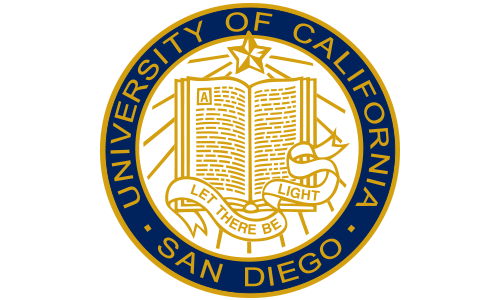Computer simulation and facilities to assess damages in infrastructures and bio-systems during extreme events
The attacks on September 11, 2001 were an extremely tragic event, and never before had we imagined two such prominent US landmarks and part of the Pentagon coming crumbling down before our eyes due to terrorism. Infrastructures, whether buildings, dams, or bridges, are often built with natural disasters in mind, but events like 9/11 have reinforced the need to design for man-made disasters, including terrorist attacks, incorporated into the construction processes. The Center for Extreme Events Research at University of California, San Diego (UCSD), advances the engineering research essential to protect critical infrastructure and bio-systems from extreme hazardous events. Leveraging interdisciplinary expertise to assess damage in extreme events such as mining explosions, landslides, car crashes and many other natural and man-made disasters, the center is well equipped not only to offer better protection of infrastructures but also to provide structural damage mitigation after events.
With experts spanning disciplines in structural engineering, mechanical and aerospace engineering, radiology, and mathematics, the center is home to the only “blast simulator” available in the field. This unique, explosive-free testing facility can shed light on designing and retrofitting structures to protect from damage, and provide data for creating enhanced computer simulations that help predict effects of larger-scale events. Led by Faculty Director Dr. Jiun-Shyan Chen, the center partners with many national defense and energy laboratories and industries to: 1. Protect the nation’s built infrastructure; 2. Provide rapid assessment of damage after disastrous events using simplified and reduced-order computational and experimental techniques; and 3. Prevent or mitigate brain and body injury due to blasts, crashes, and other stressful events.
More about the Center:
- Extreme Events Simulator and Gas Gun Facilities: The extreme event simulator is hardware that mimics how explosives hit structures. Conventionally, blast experiments would take place in the open field using real fire explosives, whose smoke hinders visibility and renders the experiment ineffective. Instead of fireball explosives, the blast simulator, designed by the Center Associate Director Dr. Hegemier, uses smoke-free, high pressure nitrogen based actuators to generate loads that simulate real blasts up to 12,000 psi-msecs, that enables indoor experiments with high-speed cameras installed in strategic places to analyze the “progressive failure” of the structure thoroughly. Likewise, the gas gun facilities, with Center Faculty Dr. Kim leading the effort, provide similar advantages, and enables world-class projectile impact and penetration research focused on impact effects on composite materials and aerospace structures.
- Advanced Computational Simulation Technology: Previously, conventional methods of constructing simulation models depended on the “mesh” function to describe a structure such as a column or a wall. However, modeling penetration or fragmentation using a mesh was extremely difficult, as the mesh would often become distorted and inaccurate. Dr. Chen, Director of the Center, was one of the original developers of the “Meshfree” computational methods for modeling materials and structures subjected to extreme loading conditions. Using points to describe the geometry of the structure instead of a mesh, the Meshfree method can model large deformation and multi-body contact, shock waves, fracture and damage mechanics, high strain rate fragment-impact processes, biosystems, as well as multi-scale mechanics and materials. Another unique computational simulation technology available at the center is the Isogeometric Analysis pioneered by the center Associate Director Dr. Bazilevs. Isogeometric analysis employs complex NURBS geometry (the basis of most CAD packages) in the FEA application directly. This allows models to be designed, tested and adjusted in one go, using a common data set.

Bio
The UC San Diego Center for Extreme Events Research was established in May, 2014 and is part of the UCSD Agile Centers; designed to respond to society’s needs in a fast manner. Usually, when there is a need from the market, businesses, or extreme event for solutions to problems that emerged, the process of technology transfer from research to application typically takes a long period of time. Hence the Agile Centers were born, created to be very mobile and responsive to needs. As a critical component of this effort, the Center for Extreme Events Research is especially valuable, expediting the transfer from research to industry in both defense and civilian sectors.
Researchers include:
STRUCTURAL ENGINEERING
Robert Asaro
Composite design and manufacturing technologies for large scale structures and marine applications. Deformation, fracture and fatigue of high temperature intermetallics.
Yuri Bazilevs, Associate Director
Design of robust and efficient computational methods for large scale, high performance computing.
David Benson
Computational mechanics and computer methods for solving problems in mechanical engineering.
Jiun-Shyan (J.S.) Chen, Director
Meshfree based computational techniques for damage assessment of solids and structures subjected to extreme loadings such as shocks, penetrations, blasts, landslides, as well as multiscale modeling of biomaterials.
Patrick Fox
Computational geotechnical and geoenvironmental engineering, including landslides, retaining walls, landfills, foundations, soil dynamics, and earthquake engineering.
Gilbert Hegemier, Associate Director
Hazard mitigation engineering using advanced materials and design to retrofit critical infrastructure systems and components.
Tara Hutchinson
Earthquake and geotechnical engineering, performance assessment of structural/nonstructural components, and machine learning and computer vision methods for damage estimation.
Hyonny Kim
Impact effects on composite materials and structures with aerospace and other applications, multifunctional materials, nano-materials, and adhesive bonding.
Falko Kuester
Scientific visualization and virtual reality, with emphasis on collaborative workspaces, multi-modal interfaces, and distributed and remote visualization of large data sets.
MECHANICAL AND AEROSPACE ENGINEERING
Alison Marsden
Computational fluid mechanics, cardiovascular mechanics, bio-fluid mechanics and biomedical devices technology emphasizing optimization methods relating to vascular surgery.
Vitali Nesterenko
New experimental capabilities for dynamic testing. Physics and mechanics of shock and high strain, strain rate deformation, instability and fragmentation of heterogeneous solid materials.
Albert P. Pisano
MEMS, manufacturing, wireless sensors for harsh environments, low-cost sensors.
Sutanu Sarkar
Computational fluid dynamics, turbulence, environmental flows.
RADIOLOGY
Shantanu Sinha
Medical physics, biomedical imaging and modeling of the musculoskeletal system under normal and diseased conditions.
MATHEMATICS
Randolph Bank
Scientific computing, numerical partial differential equations.
Li-Tien Cheng
Scientific computing, image processing, level set methods, numerical partial differential equations.
Michael Holst
Scientific computing, numerical analysis, applied analysis, mathematical physics, partial differential equations.
SAN DIEGO SUPERCOMPUTER CENTER (SDSC)
Amitava Majumdar
Director of SDSC’s Data Enabled Scientific Computing division which includes High Performance Computing Systems, User Services, and Scientific Computing. Scientific applications on HPC machines.
Mahidar Tatineni
Parallelization, scaling analysis and performance optimization of HPC applications on multi-petaflop supercomputers. Data-intensive high performance computing.
For more information, visit http://www.jacobsschool.ucsd.edu/ceer/
In the News
UC San Diego Jacobs School of Engineering
UC San Diego Jacobs School of Engineering
Publications
Videos
Awards
Hyonny Kim
Hayashi Memorial International Award, from Japan Society for Composites awarded during 13th US-Japan Conference on Composite Materials, 2008
J. S. Chen
The Computational Mechanics Award, International Association for Computational Mechanics, 2012
Yuri Bazilevs
U.S. Association for Computational Mechanics Gallagher Young Investigator Award, 2011
Tara Hutchinson
Shamsher Prakash International Research Award, 2009
Patents
U.S. Patent No. 20080292887: "Conductive Multiwalled Carbon Nanotube/Polyethylene Oxide (PEO) Composite Films and Methods of Use"
November 27, 2008


